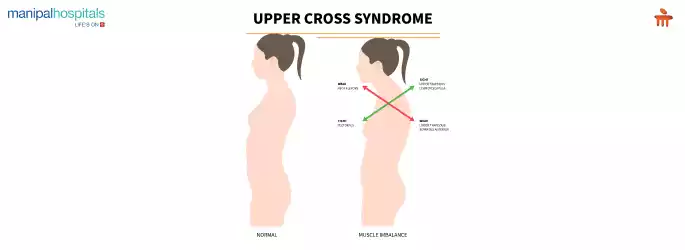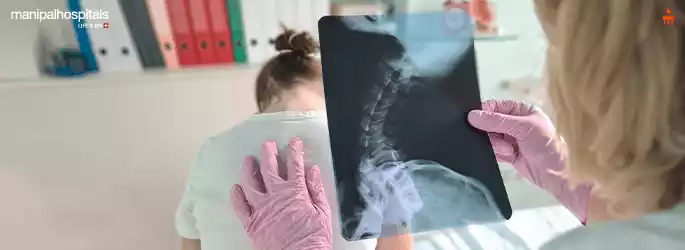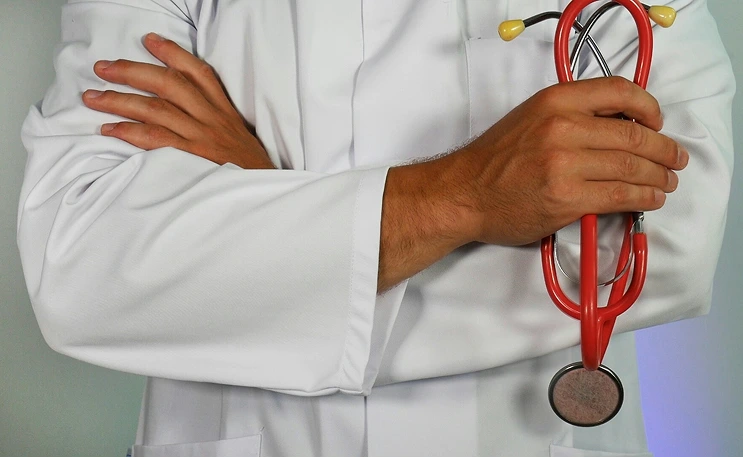Congenital kyphoscoliosis is a spinal anomaly that affects the spine's curvature in both the sagittal and coronal planes and is present from birth. This blog covers everything from symptoms, diagnoses, and therapeutic methods to suggested medical professionals that may assist you in receiving the finest care with fewer complications.
Congenital spine abnormalities are conditions of the spine that are caused by abnormal vertebral development of the fetus during pregnancy. Congenital kyphoscoliosis results in a curve in the spine that is both kyphotic (curved forward) and scoliotic (curved to the side). If neglected, these malformations may result in breathing difficulties, paraplegia (Paralysis of the lower body), and developmental issues with the heart, kidneys, and urinary tract, among other concerns.
How Can You Identify Kyphoscoliosis in Infants?
A spine surgeon in Bangalore can frequently identify a spinal abnormality at birth in situations of aberrant back curvature. Certain spine abnormalities become visible when symptoms intensify later in infancy or adolescence.
Typically, congenital spine abnormalities are marked by:
-
An irregular leftward, rightward, or backward curve or twist.
-
An unequal leg, hip, waist, or shoulder.
-
Breathing and walking challenges.
-
Bent pelvis.
Management of Congenital Kyphoscoliosis
Diagnosis
Diagnostic techniques like X-ray, MRI, and ultrasound studies are used to identify spinal abnormalities such as kyphoscoliosis among infants.
Treatment Methods
Congenital kyphoscoliosis may be treated with a variety of non-surgical and surgical procedures, ensuring appropriate medical care depending on the condition.
-
Observation with some exercises and a yearly follow-up with the doctor to check for worsening curvature are recommended.
-
Spinal bracing is advised for curves over 25° but less than 45° in a developing kid. A brace may halt the progression of the curve (s) and prevent the requirement for spinal fusion surgery.
-
Although it has not been clinically proven that yoga, physical therapy, or chiropractic adjustments will stop curve progression, they can assist in strengthening the muscles in the core.
Surgical Techniques to Treat Congenital Kyphoscoliosis
The spine begins to bend in infants during the first two years of life due to congenital anomalies of the spinal column (hemivertebra). In case the deformity is moderate (10-30-degree curve) but is progressing, it can be easily corrected by hemivertebra excision and convex hemiepiphyseodesis surgery.
Spinal fusion is another commonly performed surgical intervention for kyphoscoliosis. To rectify the curvature, metallic implants are inserted into the spine and attached to two rods. These implants maintain the repaired spine in place until the vertebrae fuse correctly. Surgery to fuse the spine will prevent a curvature from deteriorating. The majority of kids who have surgery recover quickly. After surgery, leaving the hospital takes around 6-7 days; you may return to school three weeks later. The patient should be able to resume all routine activities six months after surgery.
Visit a top hospital if you require congenital kyphoscoliosis treatment.
What to Consider Before Surgery?
Spinal deformity is becoming worse.
-
The disorder brings on unacceptable deformities.
-
The patient has persistent discomfort despite non-operative therapy alternatives.
-
Spinal cord or nerve root compression has occurred.
-
Congenital spinal abnormalities can be safely and effectively corrected for specific patients using fusion surgery and spinal correction surgery.
Manipal Hospitals Assist You in Treating All Types of Spinal Deformities
There are risks associated with any surgery, but the risks can be reduced with the proper care and qualified medical professionals. Manipal Hospital, Old Airport Road, Bengaluru has access to skilled spine surgeons in Bangalore, cutting-edge surgical technologies, and robotic guidance that can enhance surgery results for high-risk patients. They assist you in achieving increased spinal function and mobility, less pain and suffering, and an enhanced quality of life by closely collaborating with you to create individualized treatment regimens. The caregiving team provides rehabilitation facilities and supportive care services following surgery to aid patients in regaining strength and mobility.




